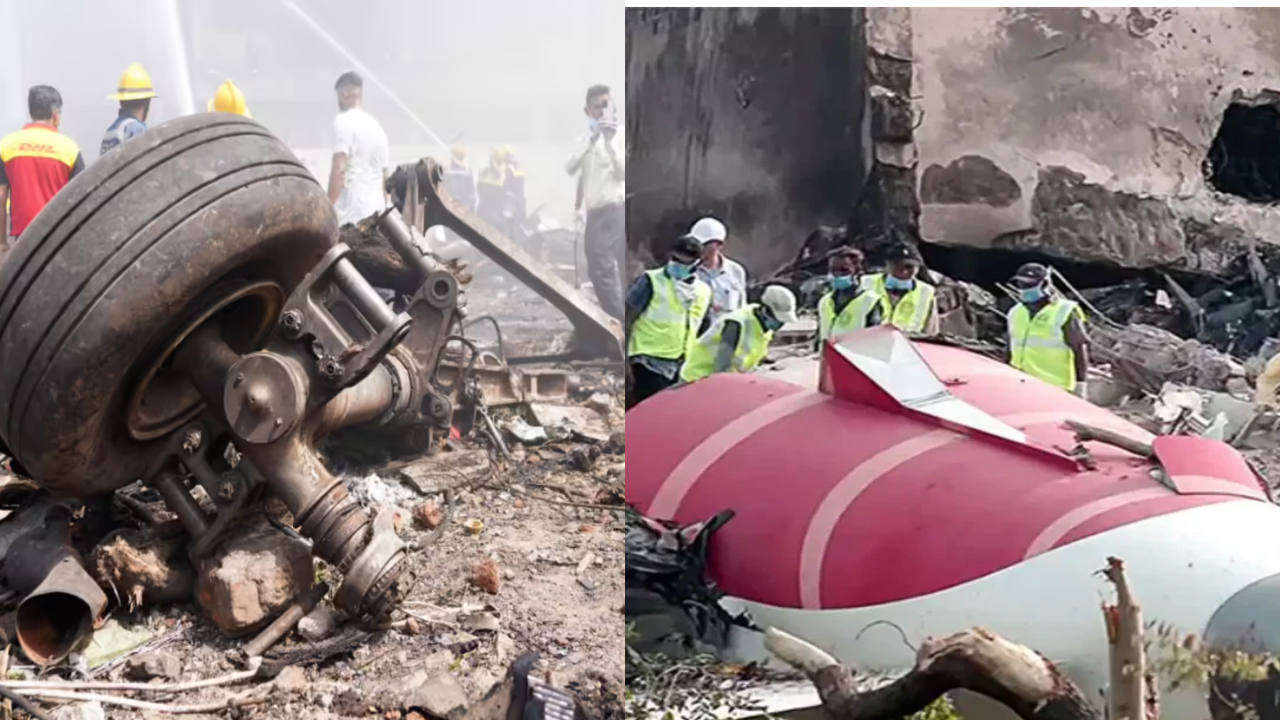🕓 When & Where
-
On June 12, 2025, at approximately 13:39 IST, Air India Flight AI‑171, a Boeing 787‑8 Dreamliner (tail VT‑ANB), departed Ahmedabad for London Gatwick. Mere 30 seconds into takeoff, it tragically crashed into a hostel complex at B.J. Medical College in Meghani Nagar, Ahmedabad (Wikipedia).

👥 The Human Toll
-
Of the 242 people onboard (230 passengers, 12 crew), 241 lost their lives.
-
19 civilians on the ground were also killed, bringing the death toll to 260 (Wikipedia, Statetimes).
-
Only one survivor emerged: British national Vishwashkumar Ramesh (People.com).
🛠️ Early Investigation Findings
-
The Aircraft Accident Investigation Bureau (AAIB) submitted its preliminary report to the Civil Aviation Ministry earlier this month (Reuters).
-
Initial focus points:
-
Fuel supply to both engines was cut off seconds after takeoff—confirmed by cockpit audio indicating one pilot asked why the fuel was being shut off (People.com).
-
The crew issued a “MAYDAY” call roughly 26 seconds after departing runway 23 (Business Today).
-
A momentary engine recovery occurred, but the aircraft didn’t regain controlled flight (News.com.au).
-
-
No signs of engine fire, technical failure, or adverse weather were noted before takeoff .
📦 Evidence & Oversight
-
The black box (DFDR and CVR) was recovered and analyzed .
-
The U.S. FAA had issued a non-mandatory advisory in 2018 regarding Dreamliner fuel control switches—potentially relevant (News.com.au).
-
U.S. and U.K. agencies, including the NTSB and Boeing, are assisting in the comprehensive investigation (News.com.au).
🧩 Factors Under Review
-
Human error vs. technical fault:
-
The switch-off could be intentional or accidental—pilots had ample experience (totaling ~ 14,000 flight hours) (https://www.oneindia.com/, The Scottish Sun).
-
Investigation is exploring whether the control design or faulty refurbishment played a role (Hindustan Times).
-
-
Other theories include bird strike, flap/gear malfunction, or fuel contamination—but fuel cutoff remains the leading explanation (India TV News).
🏛️ Aftermath
-
PM Narendra Modi, civil aviation minister, and emergency teams visited the site. Over 200 bodies' DNA was collected for identification (India TV News).
-
Political leaders are urging:
-
A judicial probe
-
Parliamentary safety review involving airlines, airports, and regulators (Reddit, Bhaskar English).
-
-
The tragedy has shaken public trust and placed Boeing 787 safety under scrutiny (The Washington Post).
🔭 What Lies Ahead
-
AAIB will finalize its detailed findings, likely within the next 6–12 months.
-
Authorities will determine:
-
Whether this was an inadvertent action, deliberate switch-off, or a mechanical failure in the fuel system or switches.
-
-
Potential outcomes:
-
Regulatory actions: safety directives, design changes, more mandatory checks.
-
Legal & compensation: families of victims and survivor may seek recourse.
-
📰 Why This Matters
-
This is India’s worst aviation disaster in nearly 30 years, and the first fatal Boeing 787 crash globally (Bhaskar English, The Washington Post).
-
Raises critical questions:
-
Pilot training and cockpit ergonomics
-
Aircraft design safety
-
Regulatory oversight of imported and maintained fleets
-
-
Sets precedent for global aviation safety protocols.
📌 Final Word
The AI‑171 crash is a profound tragedy that underscores the delicate interplay between man, machine, and system design. With the fuel supply mishap at the heart of the preliminary findings, the final report is expected to reshape aviation safety—from cockpit training to component design.
You can help by:
-
Following the inquiry with us as updates arrive.
-
Encouraging transparency in aviation investigations.
-
Pressuring regulators to enforce robust safety standards.
No comments:
Post a Comment